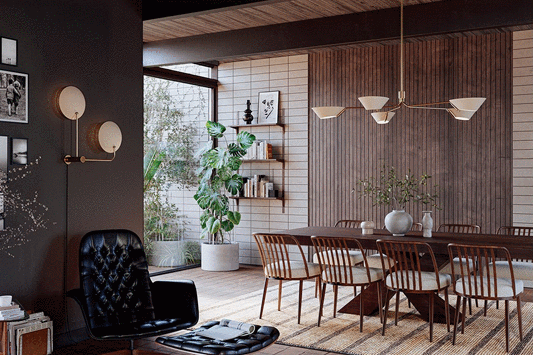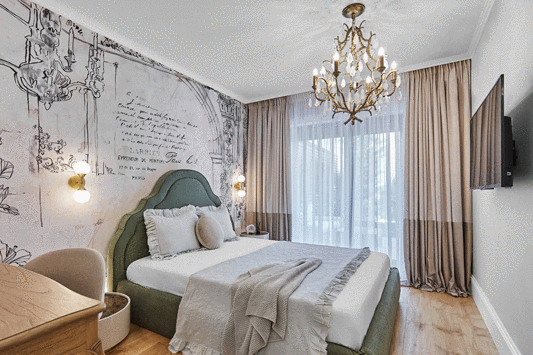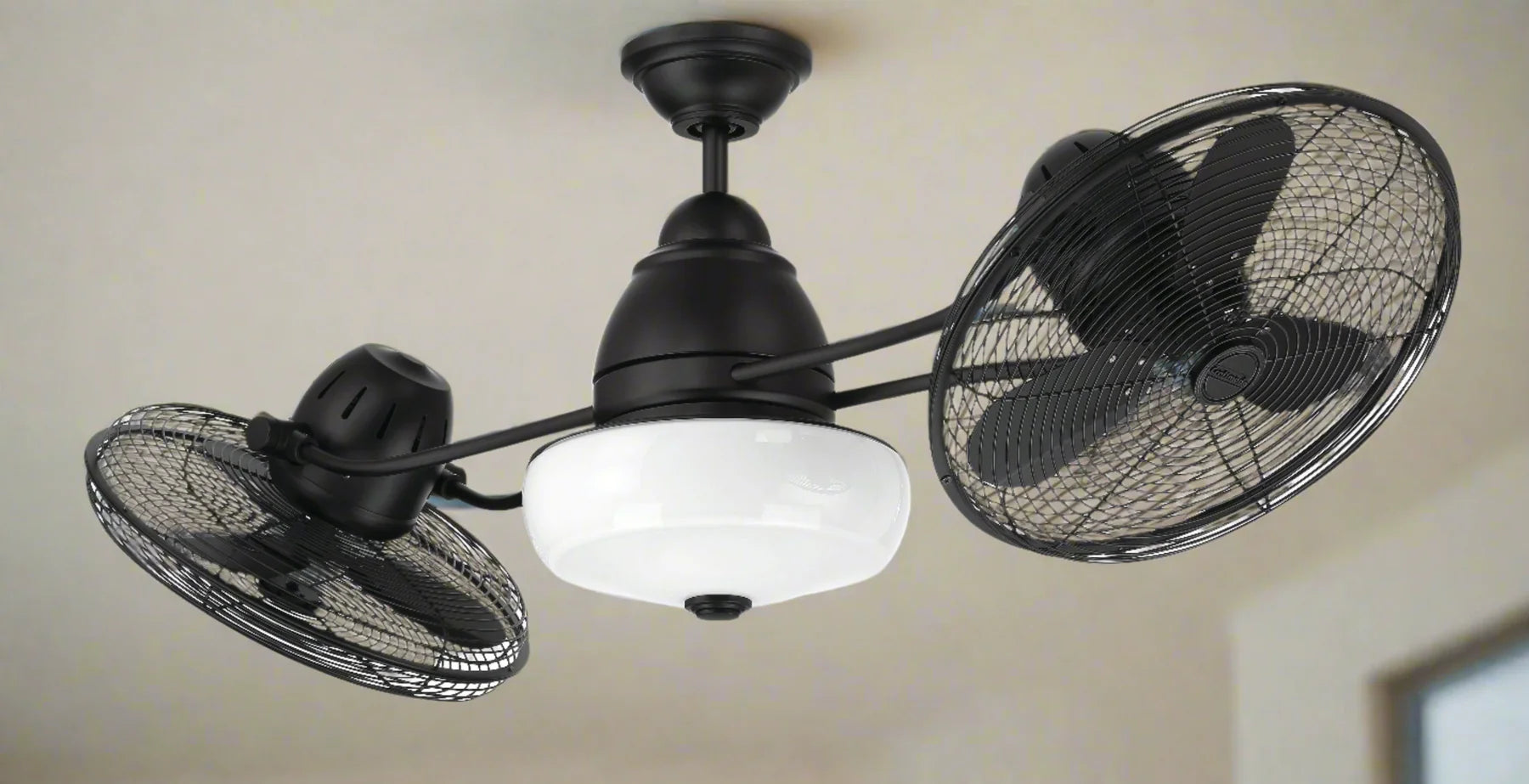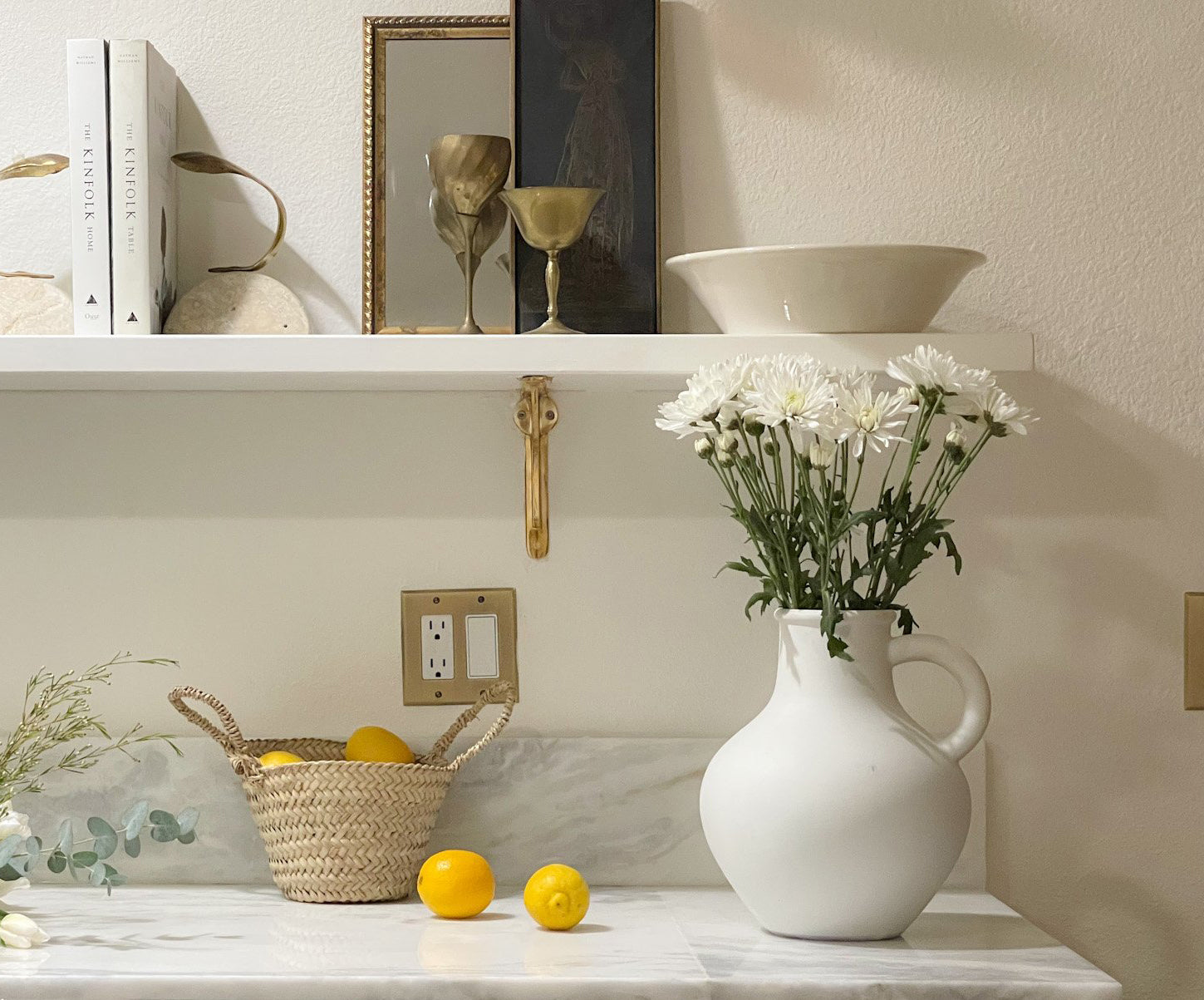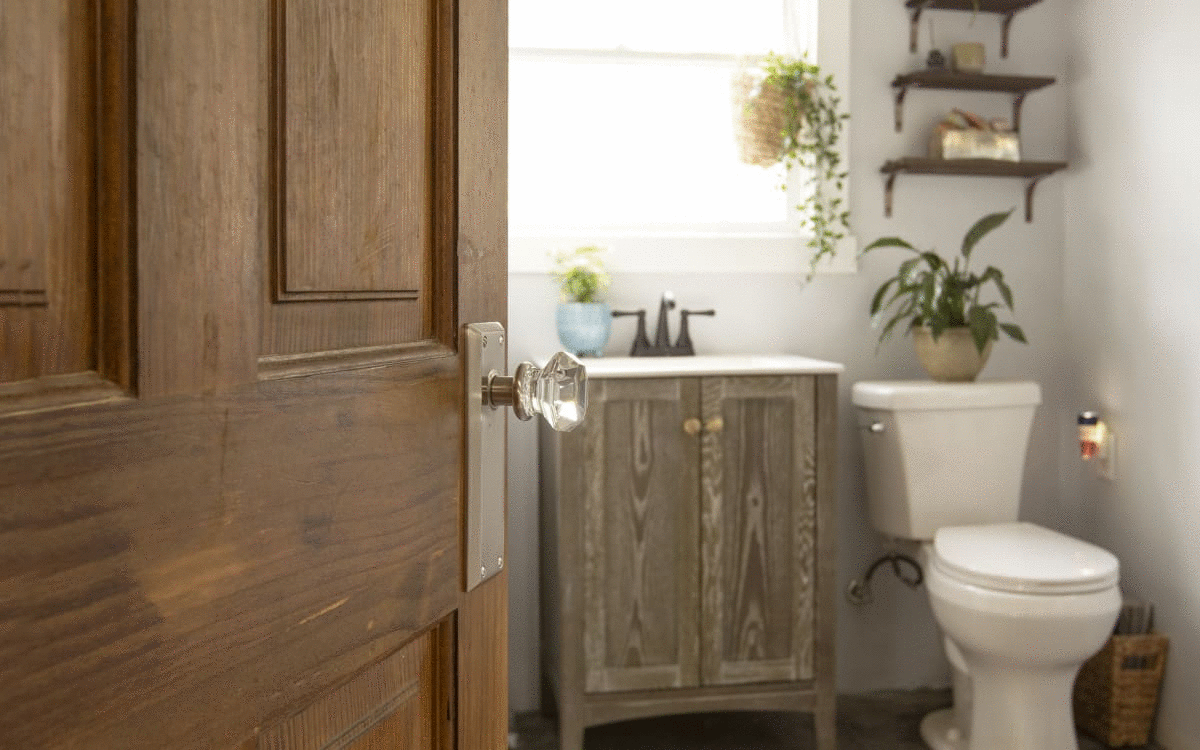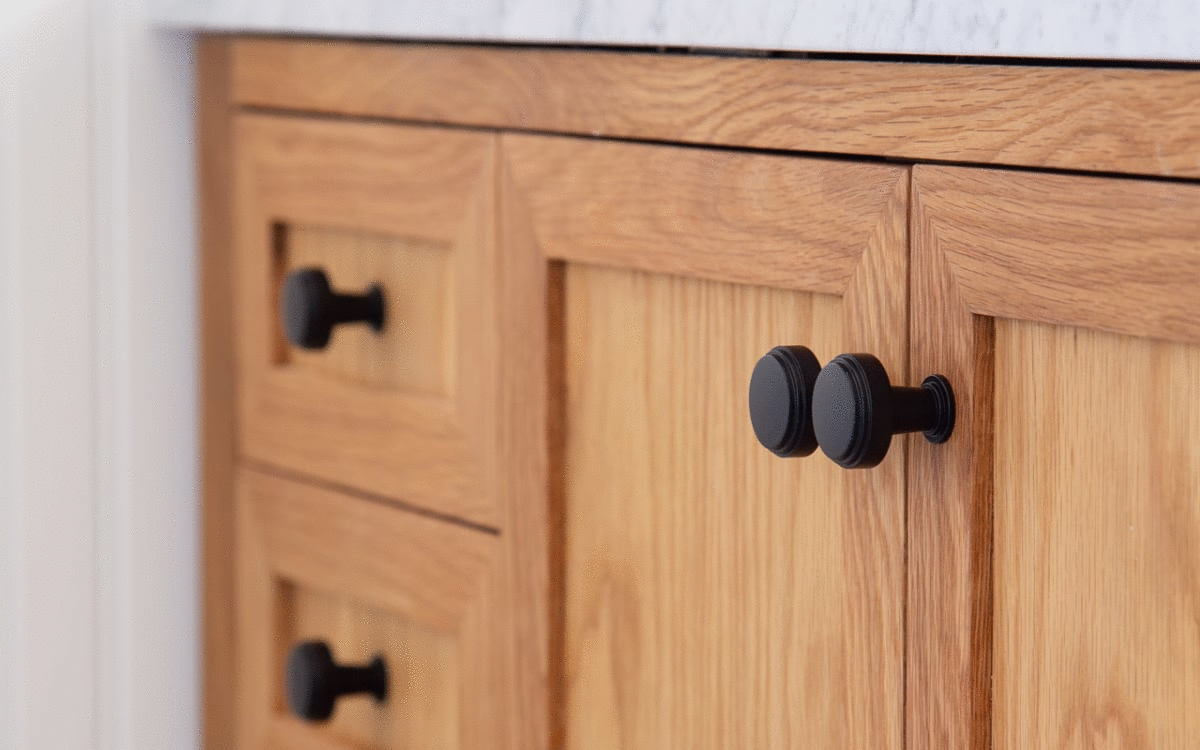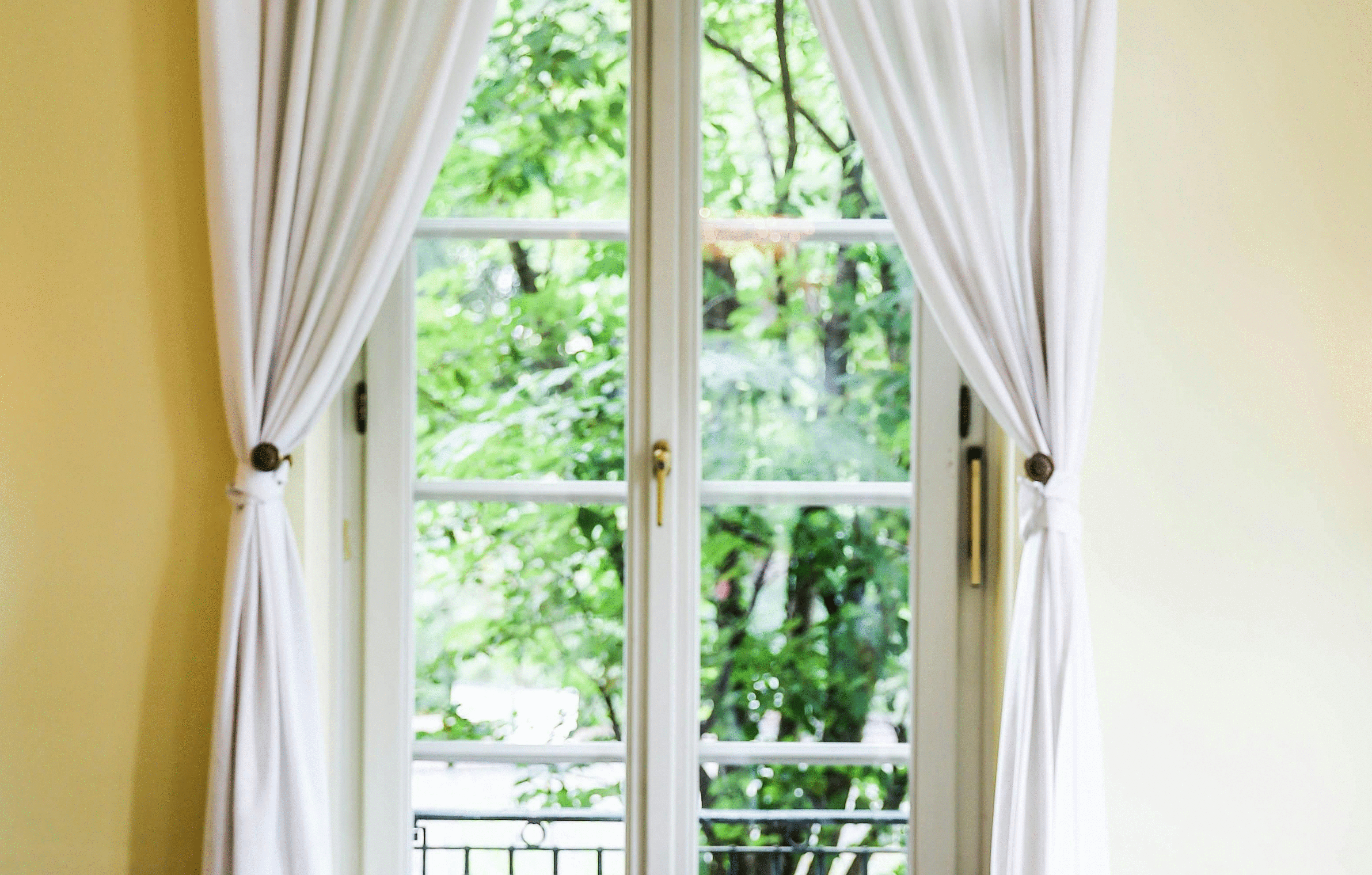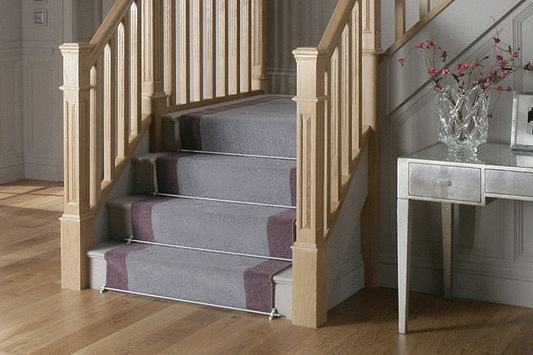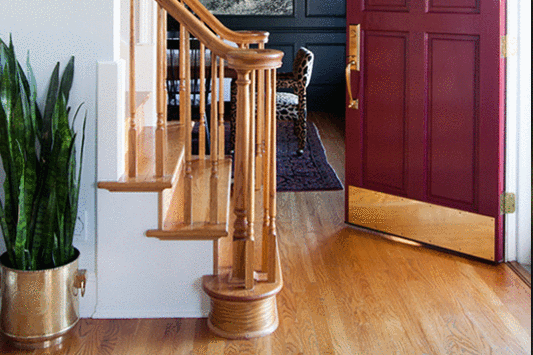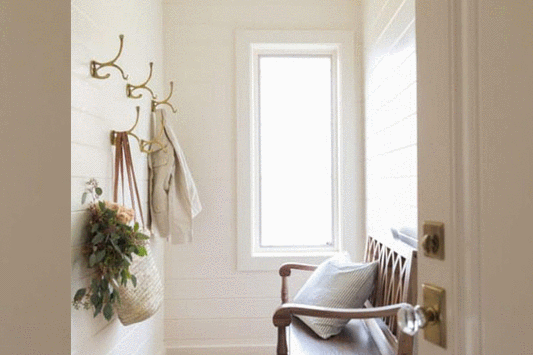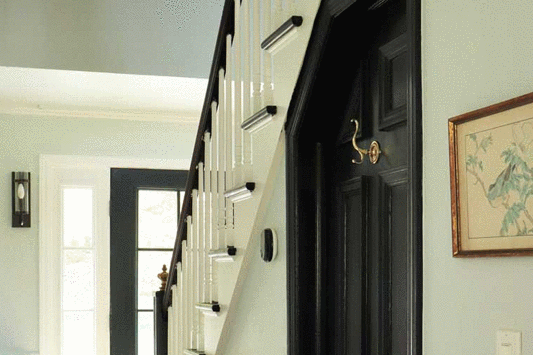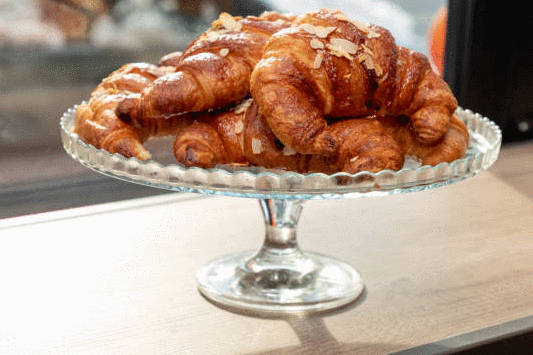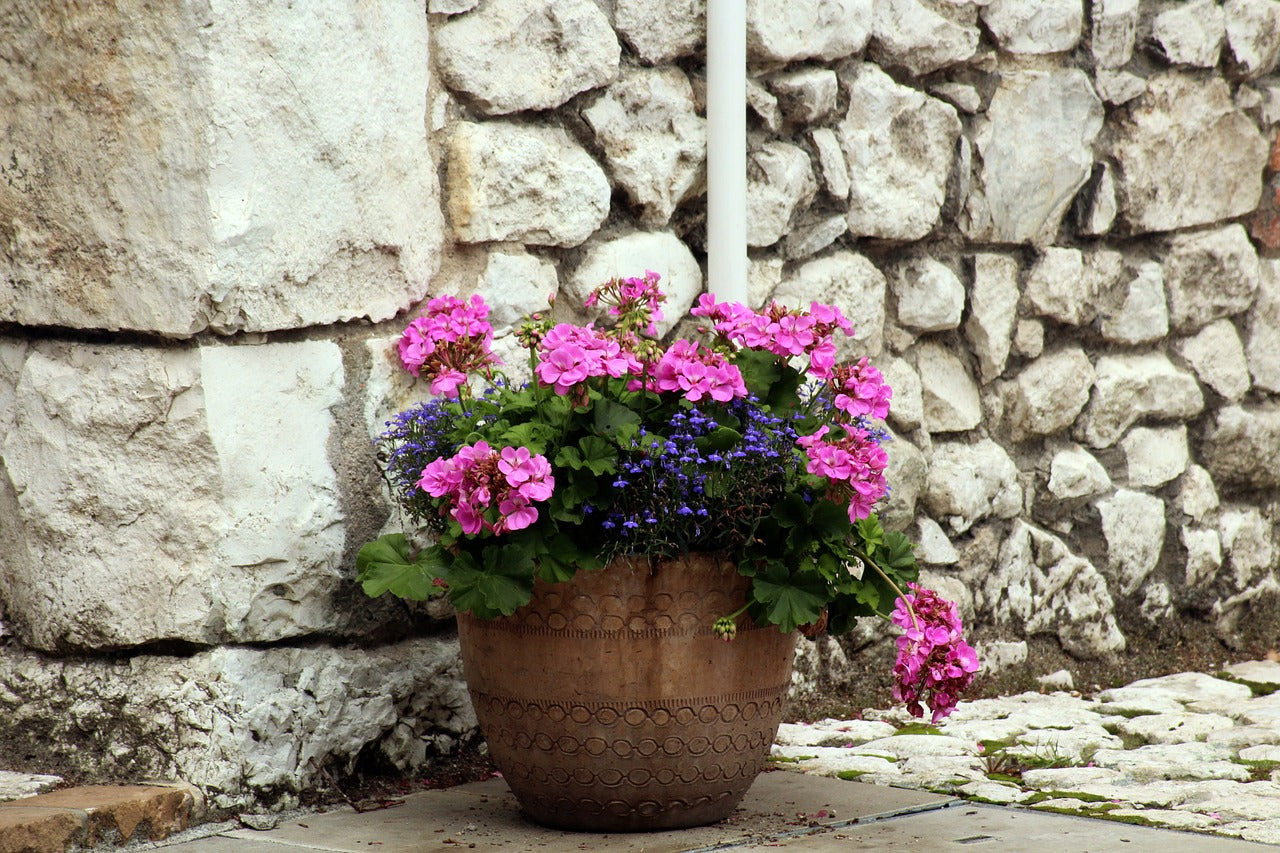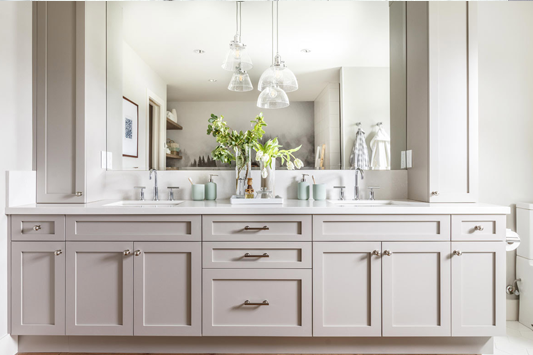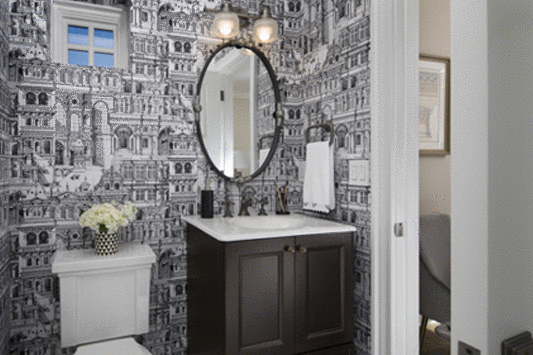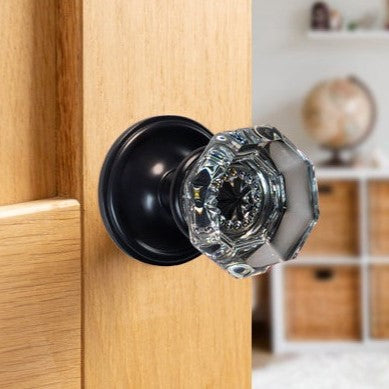Glossary of Terms
-
2 1/8 Inch Bore
2 1/8 inch hole drilled through face of door to receive a modern-style "cylinder latch" mechanism. This is the most common bore diameter on modern doors.
-
3-Way Switch
This is a push button or toggle style switch that allows a light fixture to be operated from two different places. For examples, a switch at two different ends of a hallway or staircase. 3-Way switches normally come with two components – the master and the slave components.
-
Acanthus
Acanthus or Acantha, in Greek Mythology, was a Greek mythological figure (possibly a nymph). Acanthus is also a style of Federal era hardware consisting of ornate carvings (scrolling carvings, leafs).
-
Anode
In a galvanic cell the anode is the negative electrode, where conventional current flows inwards. In an electrolytic cell, the anode is the positive terminal, which receives current from an external generator.
-
Architrave
The architrave (also called epistyle) is the lintel or beam that rests on the capitals of columns. It is the lowest part of the entablature consisting of architrave, frieze and cornice.
-
Astragal
An astragal is a strip of molding commonly used to seal between a pair of double doors. An astragal is molding profile composed of a half round surface surrounded by two flat plains (fillets). It is sometimes referred to as a miniature torus and it is used as an architectural element at the top or base of a column or as a framing device on furniture and woodwork.
-
Back Plate
A back plate can be used both on doors and cabinet hardware. Back plates (also known as Escutcheons or Rosettes) are an architectural item that surrounds keyholes, latches or lock cylinders. Back plates are mainly decorative: they draw the eye to the keyhole. However some help to protect a lock cylinder from drilling or snapping, and the surrounding area from wear. These can come in many different sizes, shapes and finishes ranging from plain to highly ornate.
-
Backset
The backset on a door or latch is the distance from the front of the door face plate to the center of the door knob. The most common backsets include 2 3/4 inches and 2 3/8 inches (other backsets also exist).
-
Boot Size
A boot size is the actual dimensional size of the hole that a cover, grate or grille fits into for mounting on a floor, ceiling or wall.
-
Bore
A hole or hole size – this normally refers to the hole drilled through the a door to allow a for the installation of a lock or latch. Most modern style doors are pre-drilled with a 2 1/8 inch diameter bore hole.
-
Bragger
A Bragger is a piece of wood or timber jutting out of a wall to carry weight (such as a balcony). The stone counterpart is called a Corbel.
-
Brass
Brass is any alloy of copper and zinc; the proportions of zinc and copper can be varied to create a range of brasses. In comparison bronze is principally an alloy of copper and tin. Despite this distinction, some types of brasses are called bronzes.
-
Brass Aging Solution
A brass aging solution is more commonly a type of acid or a mixture of chemicals compounds which oxidize un-lacquered brass. The oxidation of brass darkens or ages the brass. The amount of residence time in the solution determines the patina.
-
Bronze
Bronze is any of a broad range of copper alloys, usually with tin as the main additive, but sometimes with other elements such as phosphorus, manganese, aluminum, or silicon.
-
Butt Hinges
Butt Hinges (or Mortise Hinges) are usually found in threes or fours and these are inset (mortised) into the door and frame. Most residential hinges found in the United States are made of steel, although mortise hinges for outswing doors are often made of brass or stainless steel base to prevent corrosion. -
Butterfly or Parliament Hinges
These were known as Dovetail hinges from the 17th century onwards and can be found on old desks and cabinets from about 1670 until the 18th century. The form of these hinges varied slightly between manufacturers, and their size ranged from the very large for heavy doors to the tiniest decorative hinge for use on jewelry caskets.
-
Carpet Hold
A carpet hold is a piece of metal hardware (normally Brass or Bronze) which holds the ends of a carpet runner between the rise of the top and bottom stairs.
-
Carpet Rod
A carpet rod is a tubular or solid rod mounted with a bracket (carpet rod bracket) on each end to hold down a carpet runner at the bottom of each step of a staircase. Carpet rods are typically made from Brass or Bronze and they are decorative accents to a stairway.
-
Carpet Rod Bracket
A solid bracket (typically Brass or Bronze) that holds a carpet rod in place.
-
Carpet Runner
A carpet runner is piece of carpet running the length of a staircase. These are normally held in place with decorative tacks, nails, staples or Carpet Rods.
-
Casement Stay
A casement stay is a hinged or sliding bar attached to both the window and the window sill. The Casement Stay allows a window to open inward or outward at various angles.
-
Casement Window
A Casement Window is a form of a window that is hinged (with a Casement Stay) on the side. These windows open inward or outward at various angles.
-
Casting
Casting is a common manufacturing process by which a molten material (such as metals or glass) is introduced into a mold, allowed to solidify within the mold, and then ejected or broken out to make a fabricated part. The casting process is used for making parts of complex shape that would be difficult or uneconomical to make by other methods, such as cutting from solid material. Casting can be done by a hand press, pneumatic assist press or by automated machines. The casting process is subdivided into two distinct subgroups: expendable and nonexpendable mold casting. Many of our experts at LookInTheAttic & Company have hands-on experience in metal and glass casting.
-
Casters
A Caster is a wheel attached to the leg of a piece of furniture or equipment which allows it to roll. These are commonly found on large tables, chairs and some desks.
-
Collar
A collar refers to the raised portion of a back plate or escutcheon (normally a round or circular shape) where a door knob seats.
-
Continuouse Hinges
Continuous Hinges run the entire length of the door (also known as "Piano Hinges")
-
Corbel
A corbel (or console) is a piece of stone jutting out of a wall to carry weight (such as a balcony, cornice or arch). Corbelling, where rows of corbels support a projecting wall or parapet, has been used since Neolithic times (8500 BC). Corbelling is common in medieval architecture and in the Scottish baronial style.
-
Cornice
Cornice comes from Italian cornice, meaning "ledge". A Cornice is a horizontal projection (usually highly decorative) at the top of a building or wall. The function of the projecting cornice is to throw rainwater free of the building's walls. In residential building practice, this function is handled by projecting gable ends, roof eaves and gutters. The cornice lies above the frieze, which rests on the architrave, all supported by columns.
-
Cremone Bolts
Cremone bolts are used in doors and casement stays – these are surface mounted bolts that are operated by a knob or lever. The knob or lever bolts the frame at the top and the bottom. Cremone bolts are often used as elegant additions to a pair of french doors with very narrow stile conditions. A typical application requires active Cremone bolts mounted on each leaf of a pair of doors. -
Dentils
An even series of rectangles used as ornament to decorate cornices of classical buildings and fireplace mantels. First found in Greek architecture 400 B.C., the dentil can be found on almost any Classical style building. From Latin "dentes" or teeth - Dentils supposedly resemble a row of teeth.
-
Door Buzzer Button
A door buzzer button is a decorative accent used to replace the operating button on an existing electric doorbell. The door buzzer button transmits a signal to a transformer or electronic system to buzz or ring.
-
Door Set
A door set includes handles, back plates (or Rosettes) and hardware depending upon the door set function. Typical door set functions include Dummy, Double Dummy, Passage and Privacy. The hardware may include a latch, lock, strike plate and dummy spindles. The hardware that comes with a door set depends upon the function.
-
Double Cylinder
A double cylinder lock is a form of a deadbolt that uses a key on both the inside and outside of the door. Before installing any double cylinder lock it is best to consult local fire codes.
-
Double Hung
The double-hung window is perhaps the most familiar window type. It consists of an upper and lower sash that slide vertically in separate grooves in the side jambs. This type of window provides a maximum face opening for ventilation of one-half the total window area.
-
Dummy Set or Dummy Knob
A dummy knob is a door knob or lever trim that is surface mounted to a door and does not operate a latch. It is akin to a decorative pull. A single dummy knob has a knob on one side of the door. A double dummy knob has a knob on both sides of the door. French doors commonly use a combination of a double dummy knob and a passage style knob.
-
Duplex Switch Plate
A Duplex Switch Plate has two cutouts aligned vertically to cover a duplex receptacle.
-
Dust Corners
Dust Corners are decorative accents for stairways – Dust Corners are installed in the angle between tread, riser, and wall to prevent dust build up in the corners.
-
Edge Pull
Edge Pulls are retractable handles which are mounted on the edge of a pocket door doors. These edge pulls allow the door to be pulled out of the wall pocket. These come in many styles and finishes – from plain to highly ornate.
-
Edison Bulb
A low wattage carbon filament light bulb that emits a soft glow and is ideal for antique light fixtures. Edison Bulbs first debuted on December 31, 1879.
-
Entry Handle
A Entry Handle is a type of dummy knob that is mounted on a large back plate. These range from simple back plates to highly ornate Escutcheons.
-
Entry Mortise Lock
An Entry Mortise Lock consists of a mortise lock operated by knobs, levers or thumb latches. This system usually operates with either a modern keyed cylinder deadbolt or a skeleton key deadbolt.
-
Epistyle
The epistyle (also called architrave) is the lintel or beam that rests on the capitals of columns. It is the lowest part of the entablature consisting of architrave, frieze and cornice.
-
Escutcheon
An Escutcheon (or back plate) can be used both on doors and cabinet hardware. Escutcheons (also known as Back Plates or Rosettes) are an architectural item that surrounds keyholes, latches or lock cylinders. These are mainly decorative: they draw the eye to the keyhole. However some help to protect a lock cylinder from drilling or snapping, and the surrounding area from wear. These can come in many different sizes, shapes and finishes ranging from plain to highly ornate.
-
Espagnolette Bolts
This is another term for a Cremone Bolt. These are used in doors and casement stays – these are surface mounted bolts that are operated by a knob or lever. The knob or lever bolts the frame at the top and the bottom. Espagnolette bolts are often used as elegant additions to a pair of French doors with very narrow stile conditions. A typical application requires active bolts mounted on each leaf of a pair of doors.
-
Faceplate
A Faceplate is a metal plate on the front of a lock or latch which is visible on the edge of a door. A faceplate is used both on a latch mechanism as well as on a deadbolt system.
-
Finial
The finial is an architectural device but has been adapted to many other applications. Originally, a Finial was carved in stone and employed to decoratively emphasize the apex of a gable, or any of various distinctive ornaments at the top, end, or corner of a building or structure. Smaller sized Finials can be used as a decorative ornament on the ends of curtain rods, hinges, chairs, lamps and furniture. Finials have also been used as lightening rods atop buildings.
-
Finish
The Finish is the final surface appearance of a piece of metal or wood hardware. It can be achieved through various chemical and mechanical means. Typical Finish types include antique Brass, Bronze, Pewter, Satin Nickel and Matte Black. LookInTheAttic & Company offers a wide variety of finishes that can be customized to fit your specific requirements.
-
Floor Grate
A Floor Grate is used to cover and decorate vent holes for return air ducts. These are typically made from cast iron, brass or bronze.
-
Floor Register
A Floor Register is a Floor Grate with louvers for adjusting airflow direction or volume.
-
Flush Bolt
A Flush Bolt is used to hold a door or a set of double doors closed. The flush bolt is typically mortised into the edge of a door at the top or bottom.
-
Forged
Forging is the term for shaping metal by plastic deformation. Forging results in metal that is stronger than cast or machined metal parts. This is because during forging the metal's grain flow changes into the shape of the part, making it stronger. Some modern parts require a specific grain flow to ensure the strength and reliability of the part. Cold forging is done at low temperatures.
-
Frieze
A Frieze is the wide central section part of an entablature. It may be plain (Doric) or in the Ionic or Corinthian order decorated with bas-reliefs. In an astylar wall it lies upon the architrave ('main beam') and is capped by the moldings of the cornice.
-
GFI Plate
A GFI Cover or Plate uses a larger rectangular cutout to cover a rocker switch or GFI receptacle.
-
Gambrel
A Gambrel is a usually symmetrical two-sided roof with two slopes on each side. The upper slope is positioned at a shallow angle while the lower slope is quite steep. This design provides the advantages of a sloped roof while maximizing head space on the building's upper level. The name Gambrel is derived from Medieval Latin word gamba meaning hoof, or leg of an animal. Many Barns in the United States use Gambrel roofs.
-
Gable
A Gable is the generally triangular portion of a wall between the lines of a sloping roof. A variation of the gable is a crow-stepped gable, which has a stair step design to accomplish the sloping portion. Crow stepped gables were used in Scotland and England as early as the seventeenth century. Examples of the crow stepped gable can be seen at Muchalls Castle – a 17th century Scottish building. Other early examples are found in parts of Denmark and Sweden.
-
Half-Mortise Hinge
A Half-Mortise Hinge is where one leaf or side of the hinge is mortised into the door jamb while the other half or leaf is mounted to the front surface of the door.
-
Handrail Bracket
A Handrail Bracket is a metal bracket (normally Brass or Bronze) used to attach a wooden railing to a wall.
-
Hipped
A hip roof, or hipped roof, is a type of roof where all sides slope downwards to the walls, usually with a fairly gentle slope. Thus it is a house with no gables or other vertical sides to the roof. A square hip roof is shaped like a pyramid. Hip roofs on rectangular houses will have two triangular sides and two trapezoidal ones.
-
Hub
A Hub is the hole in a lock or latch which accepts a spindle. The hole is normally square or star shaped.
-
Keyhole Cover
A Keyhole Cover is a small Escutcheon used to decorate a keyhole.
-
Kick Plate
A Kick Plate is a metal plate used to protect an area of a door. It normally spans an area at bottom of a door to protect the wood from kicks and dents. Kick plates may be mounted to doors by a variety of means including metal screws, magnets and adhesive. Kick plates come in most any solid material including Plastic, Brass, Bronze, Iron, and Stainless Steel.
-
Knob Shank
A Knob Shank is the cylindrical base of a door knob or lever which receives the spindle. Many Knob Shanks are internally threaded and screw onto the spindle.
-
Knuckle
The Knuckle is the cylindrical middle portion of a hinge where the two leaves attach. The two leaves are held together with the hinge pin.
-
Lacquer
Lacquer is a clear or colored coating that dries by solvent evaporation and often a curing process as well that produces a hard, durable finish in any sheen level from ultra matte to high gloss. It is also used in metal finishing - halting an oxidation process of a metal such as Brass or Bronze. In a narrower sense, lacquer consists of a resin dissolved in a fast-drying solvent which is a mixture of naphtha, xylene, toluene, and ketones, including acetone.
-
Latch Bolt
A Latch Bolt is the shank of the latch that holds the door closed when the door knob is released. When the door is closed the latch bolt projects into a hole provided in the strike plate.
-
Lift Off Hinge
This type of hinge consists of two knuckles and the center pin is connected to one of the leaves. The hinge is separated by lifting the leaf connected to the top knuckle. Lift-Off Hinges allow doors to be "lifted off" without removing the screws on the hinge.
-
Living Finish
A living finish (or natural finish) is any unlacquered finish that allows the patina to change over time. This can include unlacquered Brass or Oil Rubbed Bronze.
-
Loose Pin or Loose Pin Hinges
A Loose Pin refers to a style of hinges where one finial is attached to the hinge pin. This pin can be pulled out to separate the two leaves of the hinge. Many modern doors use Loose Pin Hinges.
-
Louver
A louver (or louvre in British English, from French l'ouvert; "the open one") is a frame with horizontal and vertical slats, which are angled to admit light and air, but to keep out rain and sun shine.
-
Mansard Roof
A Mansard or Mansard roof in architecture refers to a style of hip roof characterized by two slopes on each of its four sides with the lower slope being much steeper, almost a vertical wall, while the upper slope, usually not visible from the ground, is pitched at the minimum needed to shed water. This form makes maximum use of the interior space of the attic and is considered a practical form for adding a story to an existing building. It was popularized in France by the architect François Mansart (1598–1666). His treatment of high roof stories gave rise to the term "Mansard roof" (toiture â la Mansarde).
-
Mail Slot Sleeve
A Mail Slot Sleeve is a metal insert used on hollow core doors when installing a mail slot. This is used to support the Mail Slot. These are typically made from either Brass or Bronze.
-
Mortise Lock
The Mortise Lock was created by Eli Whitney's (creator of the cotton gin ) nephews, Eli Whitney and Philos Blake. A mortise lock (mortice British English) is one that requires a pocket - the mortise - to be cut into the door or piece of furniture into which the lock is to be fitted. Mortise locks are generally found on older buildings constructed before the advent of bored cylindrical locks. The mortise lock houses both the latch and dead bolt in one unit.
-
Mortise Shutter Hinge
A Mortise Shutter Hinge is any hinge that requires a mortise be cut into the edge of the shutter and the inside of the window frame.
-
Mortise Strike or Casement Mortise Strike
A Mortise Strike (or Casement Mortise Strike) is a latch for windows that open outward. It is a type of fastener strike for out-swinging single-casement windows.
-
Non-mortise hinge
A non-mortise style hinge has thinner leaves that allow the hinge to me mounted to the surface of a cabinet or door without a mortise.
-
Offset Cabinet Hinge
An Offset Cabinet Hinge is used when a cabinet or furniture door projects out from the surface of the frame. The offset is typically achieved by turning over a hinge leaf – creating an offset. The typical offset of a hinge is 3/8 of an inch.
-
On Center
The ‘On Center’ measurement of a cabinet or furniture pull is the distance between the two center holes. It is measured from the center of one hole to the center of a second hole. It is also called the center-to-center distance.
-
Parapet
A building parapet consists of a dwarf wall along the edge of a roof, balcony, or terrace used to prevent persons from falling over.
-
Parliament Hinge or Butterfly Hinge
These were known as Dovetail hinges from the 17th century onwards and can be found on old desks and cabinets from about 1670 until the 18th century. The “H” shaped hinge is wider than it is tall to allow for a door or window to swing clear of any trim.
-
Passage Set
A Passage Set is a door knob set with a latch but no lock. This typically consists of the door knobs, strike plates, tubular latch and spindle.
-
Pediments
A pediment is a classical architectural element consisting of the triangular section found above the horizontal structure (entablature), and supported by columns. This was widely used in classical Greek architecture.
-
Picture Rail Molding
Picture Rail Molding is a piece of wood trim that runs near the top of the wall. Picture rail hooks hang from the top of the molding to hold paintings or photographs with cord.
-
Pilasters
A pilaster, as used in architecture, is a slightly-projecting column built into or onto a wall. Pilasters often appear on the sides of a door or window opening on the facade of a building, and are sometimes paired with square or round columns set at some distance away from the wall that support a roof structure above, such as a portico.
-
Pocket Door Pull
These are similar to edge pulls. These consist of a flush or nearly flush Escutcheon on the sides of the door with a recessed pull that allows the door to be pulled out from or pushed into the pocket.
-
Privacy Set
A Privacy Door set consists of a door set with a locking feature. These are typically used in Bathrooms or Bedrooms. Privacy sets come with the door knobs, tubular or mortise locking latches, spindles and rosettes.
-
Push Plates or Finger Plates
A Push Plate (or Finger Plate) is a decorative door plate used to protect the wood of a door. The door may typically have a push plate on one side and a pull handle on the other side. Swing doors may use push plates on both sides.
-
PLD or Pulsed Laser Deposition
Pulsed Laser Deposition is a state of the art technique that uses laser energy to quickly boil a surface and allow the vapors to redeposit themselves in a different configuration. For example, PLD of Diamond-Like Carbon Films is a method to sublime Carbon into a vapor and then have it cool into a diamond like film hardness.
-
PVD or Physical Vapour Deposition
Physical Vapor Deposition is a more common process to coat surfaces with molecules that show better wear results. This can be readily done to metals such as Brass or Bronze.
-
Quoins
Quoins are the corner stones that anchor the edge of the building wall. Quoins may be structural or simply decorative. Architects and builders use quoins to give the impression of strength and firmness to the outline of a building. -
Rebated or Rabbeted
A rabbet (or rebate) is a recess or groove cut into the edge of a piece of machineable material, usually wood. It is commonly used in double doors so that the joining edges overlap and create a seal.
-
Rim Keep or Keeper
A Rim Keeper refers to the metal plate attached to the door jamb, This holds the latch of a rim lock and allows the door to stay latched.
-
Rim Lock
A Rim Lock is a square or rectangular box-type door lock and it is mounted to the surface of a door. This is used in applications where the door is too thin for an internally mounted lock.
-
Rosette
A Rosette is a escutcheon for a door knob - usually circular with a hole in the Rosette to accommodate the door knob shank.
-
Sash
A sash window or hung sash window is made of one or more movable panels or "sashes" that form a frame to hold panes of glass which are often separated from other panes (or "lights") by narrow muntin bars.
-
Sash Cord/Chain
To facilitate operation of a Sash window, the weight of the glazed panel is usually balanced by a counter-weight concealed within the window frame. This is connected to the window by a sash cord or chain which runs over a pulley at the top of the frame.
-
Sash Lift
Sash Lifts are pieces of hardware used to lift the window. These come in many styles including flush mounts and bars.
-
Sash Lock
Sash Locks are found on most any window. These consist of a turn lock that is mounted to both the top and bottom sashes. This style of lock prevents the window from being opened.
-
Sash Pulley
A Sash Pulley is normally concealed within the window frame and it is used to move the sash cord that connects the window and the weights.
-
Sash Stay
A Sash Stay is metal hardware that allows the sash to be held open at various positions. These may be spring loaded sash stays.
-
Screen Door
A screen door is a hinged storm door covering an exterior door or the sliding screen door used on a sliding patio door. A screen door incorporates screen mesh to keep flying insects from getting in to the living spaces.
-
Screen Door Hinge
A Screen Door Hinge consists of a surface mounted hinge with a spring tension. The spring allows the door to swing shut automatically.
-
Set Screw
Set screws are the small screw in the shank of a knob that tighten to hold the knob on the spindle. Old set-screws vary widely in diameter and thread count.
-
Shutter Dog
A Shutter Dog is used to hold a window shutter open. These are applied to the exterior of a building. The most common type of Shutter Dog is a Lag Bolt style. The Lag Bolt style can be used to mount shutter dogs to buildings with stone, stucco, brick or frame construction. Surface Plate Shutter Dogs are for frame construction only. Long Arm Extension styles are for stone construction or any situation where the lag bolt and surface plate will not mount securely. These can also be called a tie back.
-
Single Hung
Single hung windows consist of a top and bottom sash - but only the bottom sash slides upward to open.
-
Skeleton Key
A Skeleton Key operates mechanical locks such as mortise or rim locks.
-
Spindle
A Spindle is a square rod, usually threaded, that passes through the door latch and attaches to the door knobs or levers.
-
Square Nails
Square Nails are an old style iron nail with four sides. These were used in beam construction and flooring.
-
Stainless Steel
Stainless steel is defined as an iron-carbon alloy with a minimum of 10.5% chromium content. The name originates from the fact that stainless steel does not stain, corrode or rust as easily as ordinary steel.
-
Stamped
Stamping is a metalworking process by which sheet metal strips are punched using a press tool which is loaded on a machine press or stamping press to form the sheet into a desired shape. This could be a single stage operation where every stroke of the press produce the desired form on the sheet metal part, or could occur through a series of stages.
-
Stile
The Stile is the term for the vertical pieces that make the side edges of a door.
-
Strap Hinge
A Strap Hinge is a long surface mounted hinge. These are typically used on doors and shutters.
-
Strike Plate
A Strike Plate attaches to the door jamb and allows for the door latch or lock to be held in place.
-
Thumblatch
A Thumblatch is an entry style door set that uses a lever and latch mechanism. The thumblatch is depressed and moves a lever to unlatch the door.
-
Thumbturn or Turnkey
A Thumbturn or Turnkey is used to operate a deadbolt or latch.
-
Toe Cap
Toe Caps are used as decorative and protective pieces on the legs of cabinets or chairs. These are normally made from Bronze or Brass.
-
Transom
In architecture, a transom is the term given to the horizontal member which is framed across a window, dividing it into stages or heights.
-
Transom Operator
A Transom Operator is used to allow a transom window to be easily opened without the use of a long pole or hook.
- Transom Window
-
A Transom Window is a window near the ceiling. These are typically found above doors or other windows. These are typically hinged at the bottom.
-
Tubular or Tube Latch
A Tubular Latch is a cylindrical door latch that can be installed into the edge of the door. It is operated with a spindle and a knob.
-
Wrought Iron
Wrought iron is commercially pure iron, having a very small carbon content (not more than 0.15 percent), but usually containing some slag. It is tough, malleable, and ductile and is easily welded. However, it is too soft for blades and swords, at least for their cutting edges, which are usually made of steel with higher carbon content.
-
Zenith
The zenith is the direction pointing directly above a particular location (perpendicular, orthogonal).


